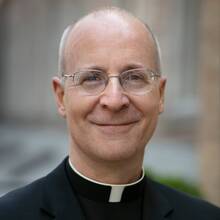Happily, the media did a decent job in its coverage of the revelations about Mother Teresa’s "dark night" contained in the bestselling book Mother Teresa: Come Be My Light. More representative of the overall coverage were thoughtful articles like David Van Biema’s piece in Time, which was something of a scoop for the magazine. (Most media outlets probably received the galleys of the piously titled book, glanced cursorily at the press release, and tossed the manuscript away, not realizing its significance.) Snarky pieces like Christopher Hitchens’ hatchet job in Newsweek were mercifully few. Newsweek’s editors doubtless viewed Hitchens, the author of The Missionary Position, a lacerating biography of Mother Teresa, as a "provocative" choice to comment on her "dark night." In the end, however, he was out of his element. What, after all, does an atheist have to say about the various movements in one’s prayer life? I look forward to being asked by Newsweek to comment on quantum physics. Many commentators seemed unable to distinguish among what I would call the "Six D’s." That is, dryness, darkness, despair, depression, doubt and disbelief, all of them separate and distinct. Dryness could be defined as a short period of feeling emptiness in prayer; darkness is a more protracted period; despair is the feeling of hopeless that says that things cannot change for the better; depression is an emotional state of sadness; doubt is an intellectual indecision; and disbelief is a clear rejection of a particular belief, in this case, belief in God. Each of these states can be distinct. For example, one can be depressed but feel no sense of darkness or despair. (As during a funeral when one is sad but feels close to God.) They can also overlap or lead to one another. Extended darkness can sometimes lead to despair. Mother Teresa, for the most part, was suffering from darkness, though from time to time she flirted with a bit of doubt. "I have no faith," she wrote at one point. Yet she persisted in her overall belief, as evidenced by the fact that she kept praying and kept working. Unfortunately, many in the media conflated her darkness with depression, her doubt with disbelief, and her dryness with despair. Next time, instead of calling upon Christopher Hitchens, magazines like Newsweek might want to contact their local retreat house for some expert advice. James Martin, S.J.
The Six D's
Show Comments ()
1
Comments are automatically closed two weeks after an article's initial publication. See our comments policy for more.
17 years 8 months ago
Wonderful article, Jim! My only addition would be to say that depression is a physiological AND emotional/mental illness. Neurobiology and PET scans (high resolution brain imaging) can tell us much more about depression and the brain than some spiritual leaders suggest. Thanks to contributions like yours, hopefully that will change some day. --Therese (of Beyond Blue)
The latest from america
At a Mass for the Jubilee of Youth outside Rome, Pope Leo exhorted over a million young people to be "seeds of hope" and a "sign that a different world is possible."
Perhaps it is the hard-won wisdom that comes with age, but the Catholic rituals and practices I once scorned are the same rituals and practices that now usher me into God's presence, time and time again.
"Only through patient and inclusive dialogue" can "a just and lasting conflict resolution can be achieved" in the long-running conflict between Israelis and Palestinians, said the Holy See's permanent observer to the United Nations.
The ”Bad Guys” films ask, how do we determine who the “bad guys” are? And if you’re marked as “bad” from the start, can you ever make good?







